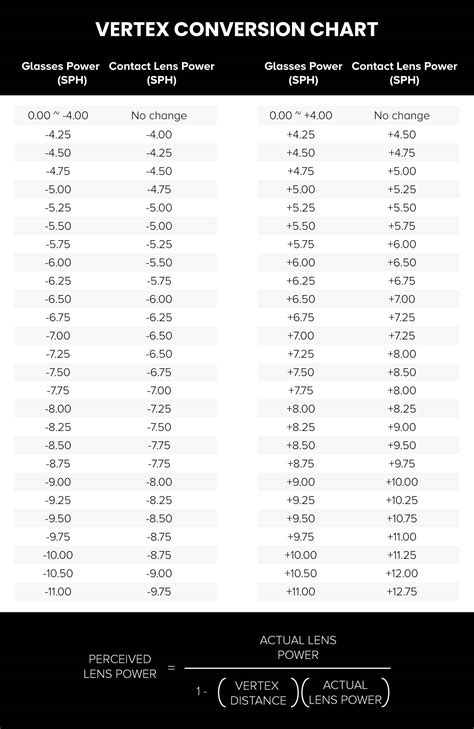Optimize Your Vision: Contact Lens to Glasses Prescription Conversion
Switching between contact lenses and glasses requires understanding the nuances of prescription conversion. While seemingly straightforward, there are crucial differences that can impact your visual clarity and comfort. This comprehensive guide will clarify the process, addressing common questions and concerns. Understanding these differences is key to achieving optimal vision, whether you're a first-time glasses wearer or a seasoned contact lens user.
What's the Difference Between Contact Lens and Glasses Prescriptions?
The primary difference lies in the measurement of the power of the lens. Glasses prescriptions measure the refractive error from the front surface of the cornea, while contact lenses measure from the cornea's surface. This seemingly small difference necessitates a conversion to ensure accurate vision correction when switching between the two. Furthermore, contact lenses sit directly on the eye, affecting the tear film and overall refractive power differently than glasses positioned a distance away. This is why a simple "one-to-one" conversion isn't possible.
Can I Just Use My Contact Lens Prescription for Glasses?
No, you should never use your contact lens prescription directly for glasses. Attempting to do so will likely result in blurry vision and potential eye strain. The differences in lens placement and measurement methods necessitate a professional conversion performed by an optometrist or ophthalmologist.
How is a Contact Lens Prescription Converted to a Glasses Prescription?
The conversion process isn't a simple mathematical formula. Your eye care professional will utilize specialized equipment and consider several factors, including:
- Vertex Distance: This refers to the distance between the front surface of the eye and the front surface of the corrective lens. This distance is significantly different between contact lenses and glasses.
- Corneal Curvature: The shape of your cornea plays a vital role in how light is refracted. This information is crucial for accurate prescription conversion.
- Pupillary Distance (PD): This measures the distance between the centers of your pupils. Accurate PD measurement is essential for proper alignment of lenses in your glasses, ensuring clear and comfortable vision.
Your eye doctor will use these measurements and advanced optical calculations to determine the appropriate glasses prescription to provide you with the best possible visual acuity.
What if My Eyes are Astigmatic?
Astigmatism, a condition causing blurred vision due to irregular corneal curvature, adds another layer of complexity to the conversion process. The cylindrical power and axis measurements used for contact lenses need to be meticulously converted to ensure accurate correction in glasses. Your eye doctor will account for this to guarantee optimal vision correction.
What are the common reasons for needing a glasses prescription conversion from contacts?
Many people choose to wear both glasses and contacts, switching between the two depending on convenience or lifestyle. Some might use glasses for activities requiring extended visual focus (like reading or computer work) and contact lenses for activities like sports. Others may switch due to contact lens discomfort or the need for a break from daily lens wear.
Are there any potential drawbacks to converting a contact lens prescription?
While a professional conversion is usually accurate, slight differences in visual acuity between glasses and contact lenses are sometimes possible. This is primarily because of the varying positions of the corrective lenses. However, a qualified optometrist will minimize this discrepancy, ensuring comfortable and clear vision in your glasses.
How often should I get my eyes checked when switching between contact lenses and glasses?
Regular eye exams are crucial for maintaining optimal eye health and visual acuity, regardless of whether you wear glasses or contact lenses. Your eye doctor will advise on the appropriate frequency, which typically ranges from yearly to every two years, depending on your individual needs and risk factors.
By understanding the intricacies of contact lens to glasses prescription conversion and the importance of professional guidance, you can ensure optimal visual clarity and comfort. Remember, always consult your eye care professional for a precise and safe conversion. Don't compromise your vision – prioritize professional expertise for a comfortable and effective transition.

